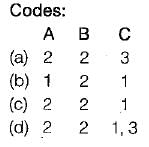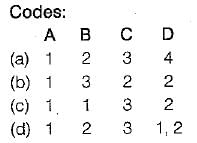Test: Introduction & IP Addressing- 2 - Computer Science Engineering (CSE) MCQ
15 Questions MCQ Test - Test: Introduction & IP Addressing- 2
To prevent signal alternation, what is the max number of repeaters that can be placed on one 10 Base 5 or 10.Base 2 network?
Which IP class provides the fewest numbers of hosts?
| 1 Crore+ students have signed up on EduRev. Have you? Download the App |
A repeater takes a weak and or corrupted signal and _____ it.
A subnet mask in class A can have ______ 1’s with the remaining bits 0’s.
To interconnect two IP classes, class A and class C networks
Given an IP address 156.233.42.56 with a subnet mask of 7 bits. How many hosts and subnets are possible.
Class_______has the greatest number of hosts per given network address.
The effective bandwidth is based on ______ .
There are three IP addresses as given below:
X = 202.23.14.150
Y = 168.19.200.12
Z = 72.192.52.210
Which of the following statements is/are correct?
The default subnet mask for a Class B network can be
Match List-I (Function) with List-11 (Layer) and select the correct answer using the codes given below the lists:


Match List-I (Function) with List-lI (Layer) and select the correct answer using the codes given below the lists
List-I
A. Reassembly of packets
B. Responsibility for delivery between adjacent nodes
C. Mechanical electrical and functional interface
D. Error correction and retransmission
List-II
1. Transport
2. Data link
3. Physical

A subnet mask in class A has fourteen 1’s. How many subnet does it define?
In a class A subnet, we know the IP address of one of the hosts and the mask as given below:
IP address = 25.34.12.56
Mask = 255.255.0.0
What is the first address (network address)?






















